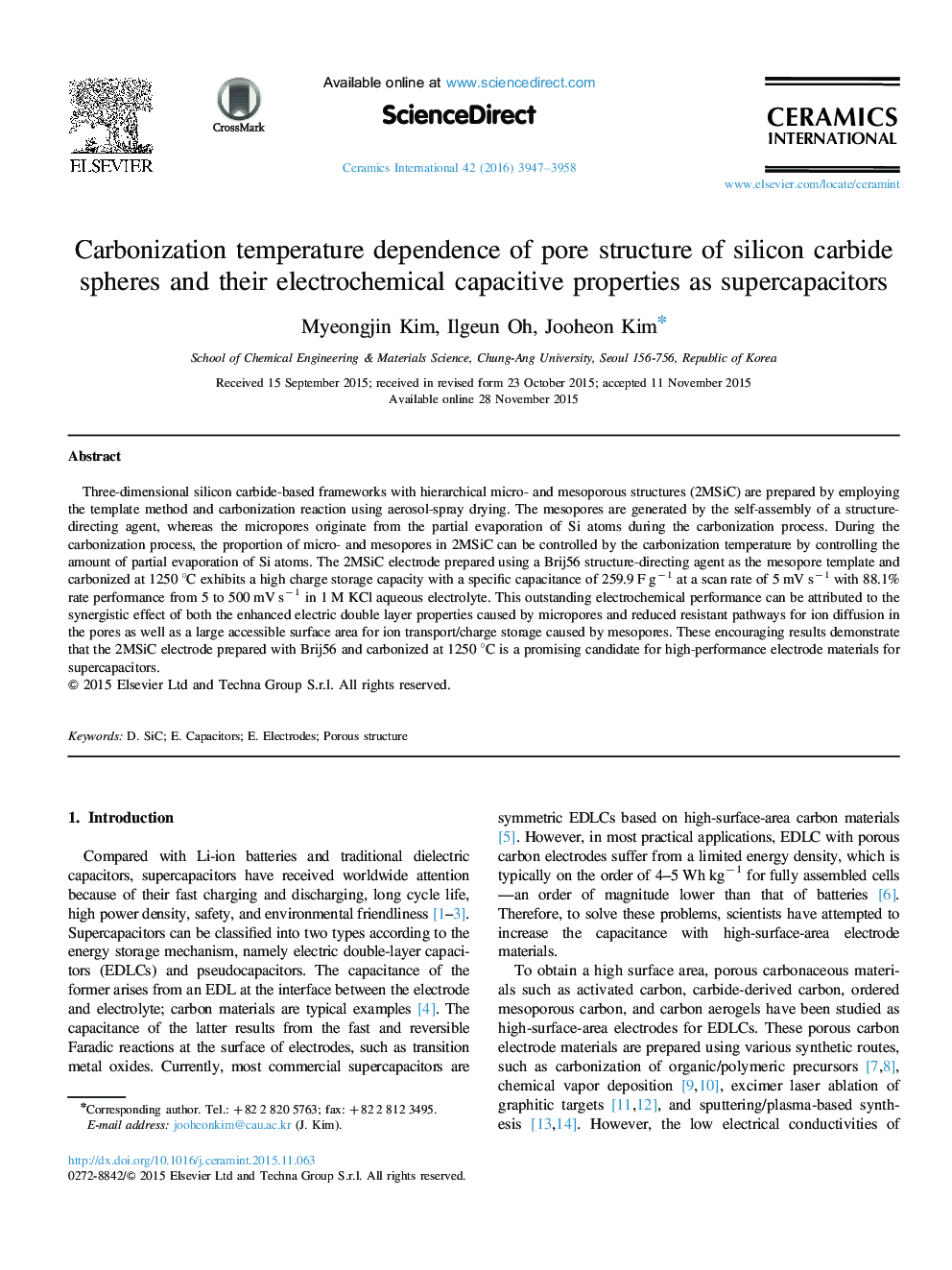| Article ID | Journal | Published Year | Pages | File Type |
|---|---|---|---|---|
| 1459126 | Ceramics International | 2016 | 12 Pages |
Three-dimensional silicon carbide-based frameworks with hierarchical micro- and mesoporous structures (2MSiC) are prepared by employing the template method and carbonization reaction using aerosol-spray drying. The mesopores are generated by the self-assembly of a structure-directing agent, whereas the micropores originate from the partial evaporation of Si atoms during the carbonization process. During the carbonization process, the proportion of micro- and mesopores in 2MSiC can be controlled by the carbonization temperature by controlling the amount of partial evaporation of Si atoms. The 2MSiC electrode prepared using a Brij56 structure-directing agent as the mesopore template and carbonized at 1250 °C exhibits a high charge storage capacity with a specific capacitance of 259.9 F g−1 at a scan rate of 5 mV s−1 with 88.1% rate performance from 5 to 500 mV s−1 in 1 M KCl aqueous electrolyte. This outstanding electrochemical performance can be attributed to the synergistic effect of both the enhanced electric double layer properties caused by micropores and reduced resistant pathways for ion diffusion in the pores as well as a large accessible surface area for ion transport/charge storage caused by mesopores. These encouraging results demonstrate that the 2MSiC electrode prepared with Brij56 and carbonized at 1250 °C is a promising candidate for high-performance electrode materials for supercapacitors.
